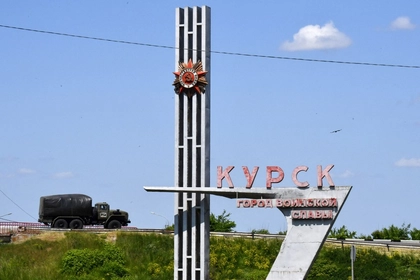Russia is expanding its naval capabilities and projecting its naval power beyond Ukraine and Eastern Europe in preparation for a potential conflict with NATO and its allies, according to a report from the Institute for the Study of War (ISW).
According to a press release from the Kremlin, Putin personally attended the flag-raising ceremony for two nuclear submarines at the Sevmash shipbuilding plant, Russia’s major submarine production site in Severodvinsk in the Arctic Circle.
JOIN US ON TELEGRAM
Follow our coverage of the war on the @Kyivpost_official.
During the ceremony, Putin said the two submarines would be sent to the Far East, and more naval crafts would be built and commissioned in the coming years.
“Work to increase Russia's naval power will certainly continue,” he said. “In the coming years, as part of the state armament program, three more Borei-A class strategic missile carriers should be launched from the stocks of the legendary Sevmash and transferred to the Navy.
“Five Yasen-M class submarines are being built at the same time, including the nuclear-powered cruiser Arkhangelsk, which is in its final stages.”
The ISW believes Russia’s goals to be ambitious considering the immense resources needed to launch new naval crafts, but the move could indicate Russian leadership’s intention to “include naval expansion as part of its long-term force expansion effort.”
Russia is also known to project its naval power in the Pacific region, according to the ISW, and it likely perceived Finland and Sweden’s bid for NATO as a threat in the Arctic region, and may therefore “intend to strengthen naval capabilities.”

Russia Says Its Troops Are in Sudzha – Ukraine’s Military Remains Silent
“The Russian military’s long-term restructuring and expansion effort aims to prepare Russia for a future-large scale conventional war against NATO, and the commitment of expensive naval resources to areas beyond Ukraine and Eastern Europe likely aims to threaten NATO and its allies across multiple regions,” reads the report.
Of the two new submarines in Severodvinsk, one is a Borei-class strategic missile carrier – the seventh of its kind – called the Imperator Alexander III that was launched on Dec. 29 last year.
The Borei-class is capable of launching nuclear-capable RSM-56 Bulava submarine-launched ballistic missiles (SLBMs) with a range of 8,000 km, with the new submarine successfully conducting a test launch of the missile last month.
Another submarine, the cruise missile carrier Krasnoyarsk (Yasen-M class submarine), is the third of its class and was launched in July 2021. Russian state media TASS reported successful trials in launching Kalibr and Oniks cruise missiles from the new submarine last month.
The flag-raising ceremony signified their entry into official service.
While Russia’s Black Sea Fleet suffered a heavy defeat in its invasion of Ukraine, the country retains a formidable submarine force that could threaten Western forces.
The country possessed the biggest submarine in the world, the nuclear-powered K-329 Belgorod, which is capable of launching nuclear-powered-and-equipped torpedoes and serving as the mothership for smaller nuclear-powered submarines, according to data from the Kremlin.
Russian submarines could also potentially destroy undersea cables, which could severely threaten communications in the Western world.
In June this year, Deputy Chairman of Russia's Security Council Dmitry Medvedev publicly threatened to destroy Western undersea communication cables with NATO officials citing “heightened concerns” a month prior to Medvedev’s statement.
You can also highlight the text and press Ctrl + Enter










![[WATCH] Russia Experiments With Motorcycle Amphibious Landing](https://static.kyivpost.com/storage/2025/03/10/dad22f0a439d809b5ed387196f3d2255.png?w=840&f=webp)
